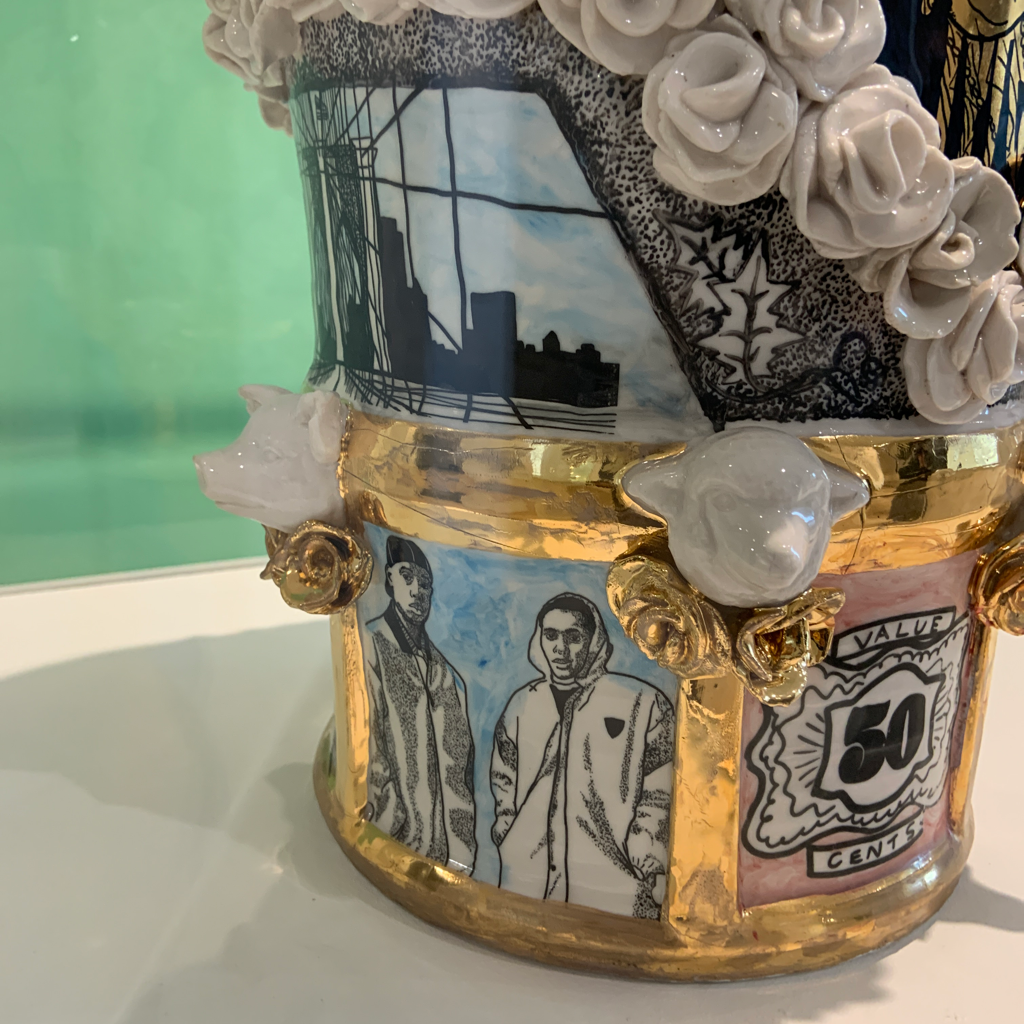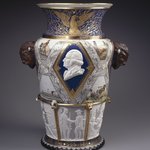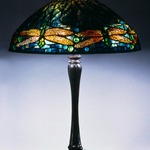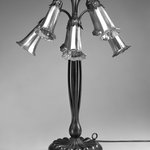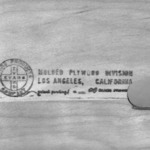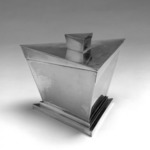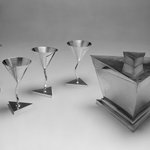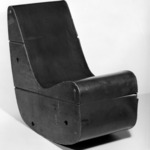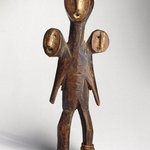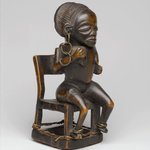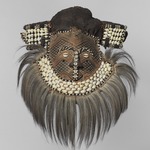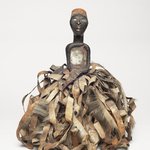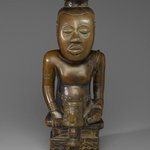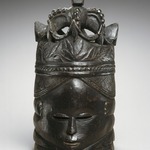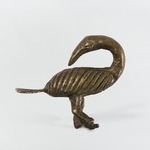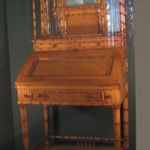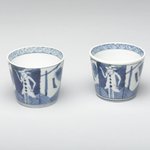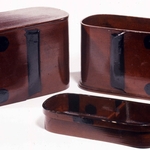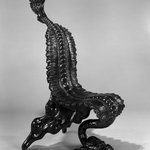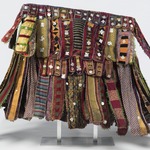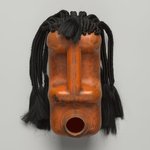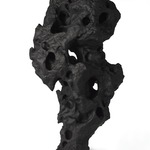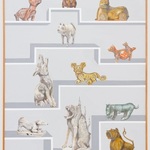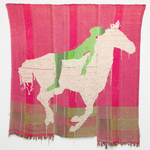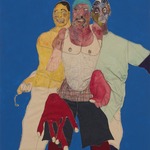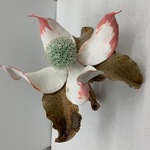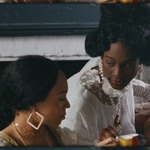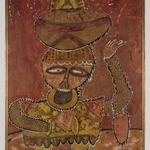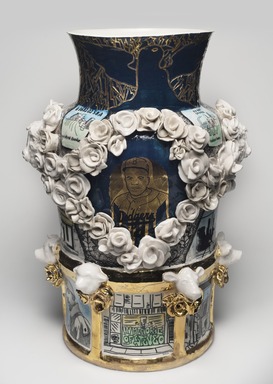

Roberto Lugo (American, born 1981). Brooklyn Century Vase, 2019. Porcelain, china paint, 18 1/4 × 13 × 13 in. (46.4 × 33 × 33 cm). Brooklyn Museum, Purchased in memory of Dr. Barry R. Harwood, Curator of Decorative Arts at the Brooklyn Museum, 1988-2018; H. Randolph Lever Fund, 2019.34. © artist or artist's estate (Photo: , 2019.34_view01_PS11.jpg)
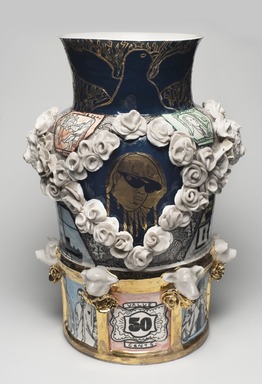
Roberto Lugo (American, born 1981). Brooklyn Century Vase, 2019. Porcelain, china paint, 18 1/4 × 13 × 13 in. (46.4 × 33 × 33 cm). Brooklyn Museum, Purchased in memory of Dr. Barry R. Harwood, Curator of Decorative Arts at the Brooklyn Museum, 1988-2018; H. Randolph Lever Fund, 2019.34. © artist or artist's estate (Photo: , 2019.34_view02_PS11.jpg)
Brooklyn Century Vase
Roberto Lugo
Decorative Arts and Design
On View: Decorative Art, 20th-Century Decorative Arts, 4th Floor
The Brooklyn Museum is commemorating its 200th anniversary by spotlighting 200 standout objects in its encyclopedic collection.
The Brooklyn Museum’s two “Century Vases” prompt lively conversations about American history and settler colonialism, as well as a contemporary cultural landscape where people of color thrive and triumph. Karl L. H. Müller’s version is the original 19th-century model, manufactured by the Brooklyn-based porcelain firm Union Porcelain Works for the 1876 Centennial Exhibition held in Philadelphia. The vase’s images—which include scenes of the Revolutionary War, William Penn’s 1682 compromise that resulted in the seizure of Indigenous Lenape land, trophy heads of animals native to North America, and steam power and electricity—assert white settlers’ conviction in their own progress in technology, land cultivation, and governance.
Reclaiming this history, Roberto Lugo’s Brooklyn Century Vase depicts the artistic and cultural achievements of Black residents of Brooklyn. In place of an idealized portrait of George Washington, Lugo celebrates Brooklyn Dodgers player Jackie Robinson, who broke the color barrier in baseball, and The Notorious B.I.G., who gave Brooklyn rap its authentic voice. Other icons of Brooklyn, including Jay-Z and the classic brownstone building, circle the bottom rim, reinforcing the borough’s status as a significant center of cultural production.
***
Gallery Label: Seeing America Through The Century Vase, 1876 and 2019
Embellished with a selective, idealized narrative of American history, Karl L. H. Mueller’s Century Vase was made in Greenpoint, Brooklyn, for the Union Porcelain Works display at the 1876 Philadelphia Centennial International Exhibition. The vase features cameos of George Washington flanked by bison-head handles and painted and relief vignettes referring to the land, history, and destiny of America as experienced by its white settlers—log cabins, the Boston Tea Party, and William Penn’s treaty with Native Americans, as well as scenes of industrial progress, including a woman at a sewing machine—that represent the young nation’s past and achievements.
Offering a counterpoint, Roberto Lugo’s Brooklyn Century Vase of 2019 revisits Mueller’s work by portraying a more complex America seen through the lens of Brooklyn. While mirroring Mueller’s composition, Lugo’s vase pays tribute to the borough and its African American legends, including baseball player Jackie Robinson and musician Christopher Wallace (The Notorious B.I.G.), while replacing Mueller’s scenes of progress with imagery borrowed from food stamps. For Lugo, the piece “presents a nuanced understanding of place, one that allows for multiple points of view…. Brooklyn, like the United States, has a complicated history, one that should be told—and represented.”



